#AI-Based Predictive Maintenance
Explore tagged Tumblr posts
Text
AI-Based Predictive Maintenance Market Size, Share Analysis, Key Companies, and Forecast To 2030
The Global AI-Based Predictive Maintenance Market is poised for significant growth as industries across the board increasingly adopt advanced technologies to enhance operational efficiency, reduce downtime, and cut maintenance costs. the AI-based predictive maintenance market size is expected to grow from USD 9.2 billion in 2023-e to USD 60.2 billion by 2030, at a CAGR of 34.4% during the forecast period (2024-2030).
The AI-based predictive maintenance market is driven by the expansion of the healthcare industry and advanced medical care. The significance of predictive maintenance in enhancing productivity within factories cannot be overstated. The widespread adoption of predictive maintenance solutions is rapidly gaining traction across both large enterprises and small to medium-sized enterprises (SMEs). This surge in adoption can be attributed to a myriad of advantages, such as diminished downtime, prolonged equipment lifespan, heightened plant safety, optimized maintenance schedules, diminished maintenance costs, and an enhanced yield rate002E
Read More about Sample Report: https://intentmarketresearch.com/request-sample/ai-based-predictive-maintenance-market-3011.html
Key Drivers of Growth:
Advancements in AI and Machine Learning: The integration of cutting-edge AI and machine learning algorithms enables the analysis of vast amounts of data generated by machinery. These technologies predict equipment failures before they occur, allowing for timely interventions and preventing costly downtime.
Rising Adoption Across Industries: Sectors such as manufacturing, energy, transportation, and healthcare are increasingly recognizing the benefits of predictive maintenance. For instance, in manufacturing, predictive maintenance helps in extending the life of machinery, ensuring smoother operations and higher productivity.
Cost Efficiency and ROI: Implementing AI-based predictive maintenance systems has proven to be cost-effective in the long run. Companies are experiencing substantial returns on investment through reduced maintenance costs, minimized unplanned outages, and optimized resource allocation.
IoT and Sensor Technologies: The proliferation of Internet of Things (IoT) devices and advanced sensor technologies is fueling the growth of the predictive maintenance market. These devices collect real-time data, which, when analyzed using AI, provides actionable insights into the health and performance of equipment.
Market Segmentation and Key Players:
The AI-Based Predictive Maintenance market is segmented by component, deployment mode, end-user, and geography. Key players in the market include IBM Corporation, Microsoft Corporation, SAP SE, General Electric, and Siemens AG, among others. These companies are investing heavily in research and development to enhance their predictive maintenance solutions and expand their market presence.
Regional Insights:
North America currently leads the market, driven by the early adoption of advanced technologies and the presence of key market players. However, the Asia-Pacific region is expected to witness the highest growth rate due to rapid industrialization, growing adoption of IoT, and increasing investments in AI technologies.
Ask for Customization Report: https://intentmarketresearch.com/ask-for-customization/ai-based-predictive-maintenance-market-3011.html
Future Outlook:
The future of AI-based predictive maintenance is bright, with ongoing advancements in AI, IoT, and data analytics. Companies that embrace these technologies stand to gain a competitive edge by optimizing their maintenance strategies, improving operational efficiency, and reducing overall costs.
About Us:
Intent Market Research (IMR) is designed to offer unique market insights, with a core focus on sustainable and inclusive growth of our clients. We offer comprehensive market research reports and consulting services to help our clients to take data driven business decisions.
Our market intelligence reports offer fact-based and relevant insights across range of industries including chemicals & materials, healthcare, food & beverage, automotive & transportation, energy & power, packaging, industrial equipment, building & construction, aerospace & defence, semiconductor & electronics to name few.
Our approach is deeply collaborative, working closely with clients to drive transformative change that benefits all stakeholders and have positive impacts. With a strong emphasis on innovation, we’re here to help businesses grow, build sustainable advantages, and bring remarkable changes.
Contact Us:
Address: 1846 E Innovation Park
DR Site 100 ORO Valley
AZ 85755
Email ID: [email protected]
Contact Number: +1 463-583-2713
0 notes
Text
Discover generative AI’s impact on manufacturing. Check out our FAQs and stay ahead with revolutionary insights!
#Advantage Of Generative AI#AI In Manufacturing#AI-Based Predictive Maintenance#Generating Design Solutions#Generative AI For Product Designers#Generative AI In Manufacturing#Generative Design In Manufacturing#Implementing Generative AI#Predictive Maintenance#Product Development#Product Development Cycle
0 notes
Text
Discover generative AI’s impact on manufacturing. Check out our FAQs and stay ahead with revolutionary insights!
#Advantage Of Generative AI#AI In Manufacturing#AI-Based Predictive Maintenance#Generating Design Solutions#Generative AI For Product Designers#Generative AI In Manufacturing#Generative Design In Manufacturing#Implementing Generative AI#Predictive Maintenance#Product Development#Product Development Cycle
0 notes
Text
Learn how generative AI addresses key manufacturing challenges with predictive maintenance, advanced design optimization, superior quality control, and seamless supply chains.
#Generative AI In Manufacturing#AI-Driven Manufacturing Solutions#AI For Manufacturing Efficiency#Generative AI And Manufacturing Challenges#AI In Manufacturing Processes#Manufacturing Innovation With AI#AI In Production Line Optimization#Generative AI For Quality Control#AI-Based Predictive Maintenance#AI In Supply Chain Management#Generative AI For Defect Detection#AI In Manufacturing Automation#AI-Driven Process Improvements#Generative AI In Factory Operations#AI In Product Design Optimization#AI-Powered Manufacturing Insights
0 notes
Text
AI-Powered Predictive Maintenance in Pharmaceutical Manufacturing
In pharmaceutical manufacturing, keeping machines running smoothly is essential for producing high-quality medicines. Traditional maintenance methods, like fixing machines after they break or scheduling routine checkups, can lead to unexpected failures or unnecessary repairs. AI-powered predictive maintenance is changing this by helping manufacturers prevent problems before they happen, saving time and money.
#AI development company in Dallas#Artificial Intelligence#AI-powered predictive maintenance#Manufacturing efficiency#Preventive maintenance#AI-based software development
0 notes
Text
Revolutionizing Industrial Efficiency: AI/ML-Based Pump & Motor Health Monitoring and Predictive Maintenance
In today’s fast-paced industrial landscape, minimizing downtime and optimizing operational efficiency are crucial for maintaining a competitive edge. Pumps and motors are essential components in numerous industries, and their failure can lead to significant operational disruptions and financial losses. Traditional maintenance approaches, often based on reactive or scheduled maintenance, are no longer sufficient. The solution lies in leveraging advanced technologies: AI and Machine Learning (ML) for predictive maintenance. The Power of Predictive Maintenance
Predictive maintenance uses AI and ML algorithms to analyze data from pumps and motors, predicting potential failures weeks in advance. This proactive approach allows maintenance teams to address issues before they escalate into costly downtime or catastrophic failures.
Key Benefits of AI/ML-Based Health Monitoring
AI/ML algorithms can detect anomalies in pump and motor performance far earlier than human operators or traditional monitoring systems. By identifying subtle changes in vibration, temperature, or sound patterns, these systems can predict failures weeks before they occur, providing ample time for corrective action.
Reduced Downtime and Maintenance Costs
By predicting and preventing failures, companies can significantly reduce unplanned downtime and the associated costs. Maintenance can be scheduled at optimal times, avoiding the need for emergency repairs and minimizing production disruptions.
Extended Equipment Lifespan
Regular, condition-based maintenance helps keep pumps and motors running at peak efficiency, extending their operational lifespan. This reduces the frequency of equipment replacements and lowers capital expenditure.
Improved Safety and Reliability
Predictive maintenance ensures that equipment is always in good working condition, enhancing the overall safety of operations. Reliable equipment also means fewer interruptions and more consistent production output.

How AI/ML-Based Systems Work
AI/ML-based health monitoring systems use a combination of sensors, data analytics, and machine learning models to continuously monitor the condition of pumps and motors.
Data Collection
Sensors attached to pumps and motors collect real-time data on various parameters, including vibration, temperature, pressure, and electrical currents.
Data Processing and Analysis
The collected data is processed and analyzed using advanced ML algorithms. These algorithms learn the normal operating conditions and identify patterns that indicate potential issues.
Anomaly Detection
When the system detects anomalies that deviate from the learned normal patterns, it flags them for further analysis. These anomalies can indicate early signs of wear and tear, misalignment, or other potential failures.
Predictive Modeling
Based on historical data and identified anomalies, predictive models forecast the remaining useful life of the equipment and predict the likelihood of future failures. This allows maintenance teams to prioritize and schedule interventions proactively.
Actionable Insights
The system provides actionable insights and recommendations to maintenance teams, enabling them to address issues before they lead to failure. This could include instructions for specific repairs, adjustments, or replacements.
Applications Across Industries
AI/ML-based health monitoring and predictive maintenance systems are versatile and can be applied across various industries, including:
Manufacturing
Ensuring continuous operation of critical machinery, reducing production downtime, and optimizing maintenance schedules.
Oil and Gas
Monitoring pumps and motors in harsh environments, predicting failures, and preventing costly shutdowns.
Water and Wastewater Management
Ensuring the reliability of pumps and motors in treatment plants, preventing service interruptions, and reducing maintenance costs.
HVAC Systems
Monitoring the health of motors and pumps in heating, ventilation, and air conditioning systems, improving efficiency and reducing energy consumption.
The Future of Industrial Maintenance
As AI and ML technologies continue to evolve, the capabilities of predictive maintenance systems will only improve. Future advancements may include more sophisticated anomaly detection algorithms, better integration with other industrial systems, and enhanced user interfaces that provide more intuitive insights and recommendations.
Call to Action
Implementing an AI/ML-based health monitoring and predictive maintenance system is not just a technological upgrade; it's a strategic investment in your business's future. By adopting these advanced solutions, you can ensure the longevity and reliability of your pumps and motors, reduce maintenance costs, and maintain continuous, efficient operations.
Don't wait for unexpected failures to disrupt your operations. Embrace the future of maintenance today and see the difference predictive maintenance can make for your business. Contact us to learn more about how our AI/ML-based pump and motor health monitoring systems can transform your maintenance strategy and drive your business towards greater efficiency and reliability.
#AI/ML-Based Health Monitoring#predictive maintenance system#Predictive Maintenance#Motor Health Monitoring#predictive modeling#Manufacturing#Industrial Maintenance#motor health monitoring systems#AI/ML-based pump and motor health monitoring systems
0 notes
Text
The Role of Sound-Based Predictive Maintenance

Hey there,
I'm excited to share our latest blog post with you, which delves into the innovative realm of sound-based predictive maintenance. In this insightful piece, we explore how modern technology, particularly SAP AI Core, is transforming maintenance strategies in industrial settings.
Discover:
The significance of auditory-based predictive maintenance
How machines decipher sound patterns to signal maintenance needs
The unique advantages of sound-based predictive maintenance over traditional approaches
Gain valuable insights and stay ahead of the curve by reading our blog post: https://www.kaartech.com/sap-ai-core-sound-based-predictive-maintenance/
Thank you for your time, and I look forward to hearing your thoughts on the topic.
1 note
·
View note
Text
Predictive Maintenance Precision: Insights from AI
AI-Based Predictive Maintenance
AI-based predictive maintenance is revolutionizing industries by leveraging artificial intelligence to forecast equipment failures before they occur, thereby minimizing downtime, reducing costs, and enhancing operational efficiency. In this article, we delve into the significance, workings, benefits, challenges, and future prospects of AI-based predictive maintenance.
Discover how AI-based predictive maintenance is revolutionizing industries by leveraging artificial intelligence to forecast equipment failures and optimize maintenance strategies.
1. Introduction to AI-Based Predictive Maintenance
Predictive maintenance involves the use of data and analytics to predict when equipment failure is likely to occur, allowing for timely maintenance and preventing unexpected breakdowns. With the integration of artificial intelligence (AI), predictive maintenance has become more accurate, efficient, and cost-effective.
2. Importance of Predictive Maintenance in Industries
Industries across various sectors rely on machinery and equipment to maintain productivity and meet customer demands. Unexpected equipment failures can lead to costly downtime, reduced output, and compromised safety. Predictive maintenance helps mitigate these risks by enabling proactive maintenance actions based on data-driven insights.
3. Understanding AI in Predictive Maintenance
How AI Revolutionizes Predictive Maintenance
AI algorithms analyze historical data patterns and real-time sensor data to predict equipment failures with high accuracy. These algorithms continually learn and adapt, improving prediction accuracy over time.
Applications of AI in Predictive Maintenance
AI is applied in various predictive maintenance tasks, including anomaly detection, fault diagnosis, remaining useful life prediction, and scheduling maintenance activities based on equipment condition and workload.
4. Key Components of AI-Based Predictive Maintenance Systems
Data Collection and Monitoring
Data from sensors, IoT devices, and equipment logs are collected and monitored in real-time to identify abnormalities and patterns indicative of potential failures.
Machine Learning Algorithms
Machine learning algorithms process the collected data to identify correlations, trends, and anomalies, enabling predictive modeling and decision-making.
Predictive Analytics
Predictive analytics techniques, such as regression analysis and time-series forecasting, are used to predict equipment failures and prescribe optimal maintenance actions.
5. Benefits of AI-Based Predictive Maintenance
Cost Savings
By preventing unplanned downtime and minimizing maintenance costs, AI-based predictive maintenance helps organizations save money and optimize resource allocation.
Increased Equipment Reliability
Regular maintenance based on predictive insights enhances equipment reliability, prolongs asset lifespan, and improves overall operational efficiency.
Enhanced Safety
Proactive maintenance reduces the risk of equipment failures and associated safety hazards, creating a safer work environment for employees.
6. Challenges and Limitations of AI in Predictive Maintenance
Data Quality and Availability
The effectiveness of AI-based predictive maintenance relies on the quality and availability of data. Incomplete or inaccurate data can lead to unreliable predictions and false alarms.
Implementation Costs
Initial investments in AI infrastructure, sensors, and data management systems may pose financial challenges for organizations, especially small and medium-sized enterprises.
Integration with Existing Systems
Integrating AI-based predictive maintenance systems with existing equipment and enterprise software requires careful planning and coordination to ensure compatibility and seamless operation.
7. Case Studies Highlighting Successful AI-Based Predictive Maintenance Implementations
Several industries, including manufacturing, healthcare, transportation, and energy, have successfully implemented AI-based predictive maintenance solutions, resulting in improved asset performance, reduced maintenance costs, and increased operational efficiency.
8. Future Trends and Innovations in AI-Based Predictive Maintenance
The future of AI-based predictive maintenance holds exciting possibilities, including advancements in predictive algorithms, integration with emerging technologies like edge computing and 5G, and the development of predictive maintenance-as-a-service offerings.
9. Conclusion
In conclusion, AI-based predictive maintenance offers a proactive approach to equipment maintenance, enabling organizations to optimize asset performance, reduce downtime, and enhance operational efficiency. While challenges exist, the benefits of AI in predictive maintenance far outweigh the costs, paving the way for a more reliable and sustainable future.
FAQs
What industries benefit most from AI-based predictive maintenance?
How does AI improve the accuracy of predictive maintenance?
What are the primary challenges in implementing AI-based predictive maintenance?
Can small businesses afford AI-based predictive maintenance solutions?
What role does data quality play in the effectiveness of predictive maintenance systems?
#AI-based maintenance#Predictive analytics#Machine learning in maintenance#Equipment reliability#Predictive maintenance benefits#Industrial automation#Data-driven maintenance#Proactive maintenance strategies#Predictive maintenance implementation#IoT sensors in maintenance
0 notes
Text
CLASSIFIED - FOLD-BOUNDARY AIRCRAFT PROGRAM

FB-1 "Harbinger" Fold-Boundary Experimental Aircraft
TECHNICAL SPECIFICATIONS
PROPULSION
Primary Propulsion: Modified F135-PW-100 turbofan with fold-volume-expanded architecture.
Effective Thrust: 191kN (dry) / 280kN (afterburner).
Apparent Thrust: 130kN (dry) / 190kN (afterburner).
Exhaust Management: Conventional exhaust geometry with fold-enhanced flow stabilization to maintain subsonic airflow continuity across external plasma boundaries.
Throttle Response: ~0.7 seconds from idle to max dry; ~2.3 seconds to afterburner.
SPATIAL ENGINEERING
Integrated Fold-Volume Expansions:
Main Engine Cavity: 2.3:1 spatial ratio (internal volume x2.3).
Fuel Storage: Four distributed chambers at 1.8:1 spatial ratio (effective capacity ~16,200 liters).
Ammunition/Stores Bay: 1.5:1 spatial ratio, supports 6,000 kg internal load.
Computing Space: 2.1:1 spatial ratio, with thermal isolators for core electronics.
Cumulative Plasma Boundary Intensity Threshold: 3.8 TeV/m² (manifold collapse risk at ~4.2 TeV/m²).
Notes: Distributed expansion ratios mitigate ionization-based plasma buildup in terrestrial atmospheres, particularly critical below 30,000 ft or in high-humidity environments.
COOLING SYSTEM
Thermal Management: Rotating Drum Evaporative Cooling (RDEC) System.
Drum Specifications:
Apparent Diameter: 1.2m.
Actual Diameter: 2.76m.
Surface Area: ~24.0m².
Rotation Speed: 1500 RPM (idle) to 2100 RPM (max thermal load).
Coolant: Modified fluorocarbon FC-77.
Boiling Point: ~56°C.
Coolant Capacity: 240 liters (operational duration ~120 minutes at sustained load).
Heat Dissipation:
Nominal: 220 kW.
Peak: 320 kW (coolant consumption increases).
Vapor Signature: Characteristic fluorocarbon "steam" trail forms during sustained operations or rapid maneuvering.
COMPUTATIONAL SYSTEMS
Fold-Expanded Predictive Computing Array:
Cores: 1024 RISC-V derivative cores with extrasolar manifold integration.
Clock Speed: 4.8 GHz.
Effective Performance: 42 PFLOPS (predicted peak).
Latency: 18ms (core-to-MFD response).
Prediction Horizon: ~3.1 seconds for single combatant targeting; swarm dynamics increase computational load exponentially.
Communication: Quantum coherence data relay across internal folds; hardwired backup via RF burst links.
Notes: Real-time AI-assisted targeting prioritizes swarm neutralization but offloads corridor navigation to the pilot for better response in sub-critical conditions.
PERFORMANCE ENVELOPE
Maximum Speed: Mach 2.4 (altitude-dependent).
Cruising Speed: Mach 1.1 (efficiency optimized).
Service Ceiling: 67,000 ft.
Combat Radius: 1,300 nm.
G-Limit: +9.5/-3.5.
Takeoff Distance: 340 meters (with afterburner).
Landing Distance: 450 meters (fold-assist airbrakes).
Weapon Payload:
Internal: 6,000 kg (compatible with NATO-standard ordnance).
Wing Pylons: 4 x 500 kg (external stores compromise boundary stability).
Standard Loadout:
8x AIM-120D AMRAAM.
2x AIM-9X Sidewinder.
2x GBU-39 SDB (internally stored).
OPERATIONAL NOTES
Primary Mission Profile:
Long-duration swarm suppression and precision strikes within extraterrestrial corridors.
Effective against extrasolar combatants utilizing drone tactics and maneuverable swarm behavior.
Flight Characteristics:
Tight turning radius (~650 meters at Mach 1.0) allows for corridor navigation and dogfighting in confined spaces.
Low observable to extrasolar detection systems in dry air; vapor trails and thermal blooms increase detectability in moist or high-humidity environments.
Limitations:
Coolant reserves deplete rapidly under sustained combat loads; maximum operational duration ~2 hours without refit.
Plasma boundary effects destabilize in atmospheric conditions exceeding 85% relative humidity.
High maintenance requirements for spatial integration hardware and RDEC systems.
Boundary folding imposes structural stress; airframe requires inspection every ~150 flight hours.
SUMMARY
The FB-1 "Harbinger" represents humanity’s first operational attempt to incorporate extrasolar fold-boundary technology into aerospace engineering. While limited by coolant reserves, boundary-induced stress, and vapor visibility, the Harbinger excels in its role as a swarm suppression platform. Its combination of advanced predictive systems, spatially enhanced storage, and exceptional maneuverability ensures dominance in extraterrestrial and terrestrial combat scenarios.
NOTES: Development of next-generation cooling systems and boundary field stabilizers is critical for further operational scalability and mission success in extrasolar theaters.
16 notes
·
View notes
Text
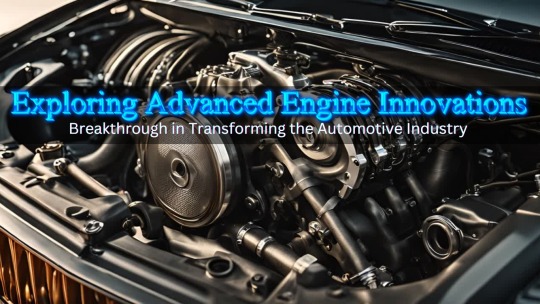
Pioneering the Future of Transportation: Innovative Car Engine Technologies
The automotive industry is undergoing a revolutionary transformation, driven by innovative car engine technologies that are shaping the future of nationwide car shipping. These advancements are crucial in improving vehicle performance, efficiency, and sustainability, paving the way for a new era of mobility. As environmental concerns and regulatory pressures mount, automakers are investing heavily in developing cutting-edge engine solutions that not only enhance performance but also reduce emissions and improve fuel economy.
Emerging Car Engine Solutions
1. Electric Powertrains
One of the most significant innovations in car engine technology is the rapid development of electric powertrains. Major automakers are investing heavily in electric vehicle (EV) production, aiming to become global leaders in electric mobility by 2030. Electric powertrains offer several advantages:
Zero direct emissions, contributing to reduced air pollution
Higher energy efficiency compared to traditional internal combustion engines
Instant torque delivery, providing improved acceleration and performance
By 2030, it is expected that 55 percent of all cars sold in Europe will be fully electric, highlighting the growing importance of this technology.
2. Advanced Internal Combustion Engines
While electric vehicles are gaining traction, innovative internal combustion engine designs are also being developed to improve efficiency and reduce emissions. These advancements include:
Variable compression ratio engines that adjust compression based on driving conditions
Homogeneous charge compression ignition (HCCI) engines that combine the best features of gasoline and diesel engines
These technologies aim to squeeze more power and efficiency out of traditional fuel sources, providing a bridge between conventional and fully electric vehicles.
3. Hybrid Powertrains
Hybrid powertrains, which combine internal combustion engines with electric motors, continue to evolve and offer a balance between traditional and electric technologies. Advanced hybrid systems provide:
Improved fuel efficiency through regenerative braking and electric-only operation at low speeds
Reduced emissions while maintaining long-range capabilities
Enhanced performance through the combination of electric and combustion power
4. Hydrogen Fuel Cell Technology
While still in the early stages of adoption, hydrogen fuel cell technology is gaining attention as a potential alternative to battery-electric vehicles. Fuel cell engines offer:
Zero emissions, producing only water vapor as a byproduct
Faster refueling times compared to battery charging
Longer range capabilities, especially for larger vehicles from the nationwide auto transport companies and long-distance transportation
The Future of Automotive Innovation
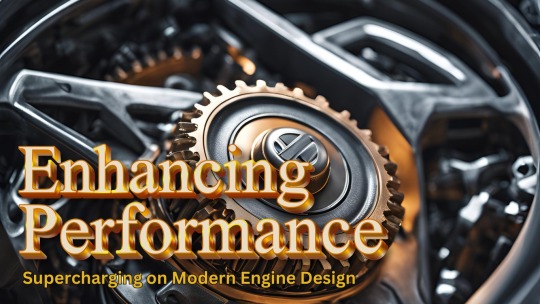
The continued development of advanced car engine technologies is set to transform the automotive landscape dramatically. As these innovations progress, we can expect to see:
Enhanced Vehicle Intelligence: The integration of AI and machine learning in engine management systems will lead to smarter, more responsive vehicles. For instance, BMW Group and NVIDIA Corporation's collaboration aims to integrate AI computing platforms into vehicles, enabling advanced autonomous driving capabilities and intelligent engine control features.
Improved Connectivity: The automotive industry is moving towards a more connected future. Ford Motor Company and Amazon Web Services (AWS) are developing a cloud-based platform for next-generation connected vehicles, enabling features like over-the-air software updates and predictive maintenance for engine systems.
Sustainable Transportation Solutions: With a focus on electric powertrains, hydrogen fuel cells, and more efficient combustion engines, the automotive industry is actively working towards reducing its environmental impact. This shift is expected to accelerate, with more automakers committing to sustainable practices and products.
Enhanced Performance and Efficiency: The combination of advanced engine control systems and innovative powertrain technologies will result in vehicles that are not only more efficient but also offer improved performance across various driving conditions.
Automakers are playing a crucial role in driving these innovations forward. Companies like General Motors, Volvo, Aston Martin, and Jaguar Land Rover are planning to manufacture only electric cars in the foreseeable future, demonstrating their commitment to sustainable mobility solutions.
Additionally, collaborative efforts between automakers, engine suppliers, research institutions, and government agencies are facilitating technology innovation, standardization, and scale economies that drive down costs and accelerate the adoption of cleaner, more efficient engines.
The future of auto transport services in california is being shaped by remarkable advancements in car engine technologies. From electric powertrains to advanced internal combustion engines and hydrogen fuel cells, these innovations are not only enhancing vehicle performance and efficiency but also contributing to a more sustainable automotive ecosystem.
As we move forward, the continued collaboration between automakers, nationwide car carriers, and automotive industries will be essential in realizing the full potential of these groundbreaking technologies, ultimately transforming the way we travel and interact with our vehicles.
The automotive engine market is expected to grow from USD 94 billion in 2022 to USD 130.63 billion by 2028, with a CAGR of 5.48%. This growth underscores the importance of innovative engine technologies in shaping the future of the best nationwide auto transport.
As these technologies continue to evolve, they will not only revolutionize the driving experience but also play a crucial role in addressing global environmental challenges and creating a more sustainable future for mobility.
vimeo
8 notes
·
View notes
Text
AI & IT'S IMPACT
Unleashing the Power: The Impact of AI Across Industries and Future Frontiers
Artificial Intelligence (AI), once confined to the realm of science fiction, has rapidly become a transformative force across diverse industries. Its influence is reshaping the landscape of how businesses operate, innovate, and interact with their stakeholders. As we navigate the current impact of AI and peer into the future, it's evident that the capabilities of this technology are poised to reach unprecedented heights.
1. Healthcare:
In the healthcare sector, AI is a game-changer, revolutionizing diagnostics, treatment plans, and patient care. Machine learning algorithms analyze vast datasets to identify patterns, aiding in early disease detection. AI-driven robotic surgery is enhancing precision, reducing recovery times, and minimizing risks. Personalized medicine, powered by AI, tailors treatments based on an individual's genetic makeup, optimizing therapeutic outcomes.
2. Finance:
AI is reshaping the financial industry by enhancing efficiency, risk management, and customer experiences. Algorithms analyze market trends, enabling quicker and more accurate investment decisions. Chatbots and virtual assistants powered by AI streamline customer interactions, providing real-time assistance. Fraud detection algorithms work tirelessly to identify suspicious activities, bolstering security measures in online transactions.
3. Manufacturing:
In manufacturing, AI is optimizing production processes through predictive maintenance and quality control. Smart factories leverage AI to monitor equipment health, reducing downtime by predicting potential failures. Robots and autonomous systems, guided by AI, enhance precision and efficiency in tasks ranging from assembly lines to logistics. This not only increases productivity but also contributes to safer working environments.
4. Education:
AI is reshaping the educational landscape by personalizing learning experiences. Adaptive learning platforms use AI algorithms to tailor educational content to individual student needs, fostering better comprehension and engagement. AI-driven tools also assist educators in grading, administrative tasks, and provide insights into student performance, allowing for more effective teaching strategies.
5. Retail:
In the retail sector, AI is transforming customer experiences through personalized recommendations and efficient supply chain management. Recommendation engines analyze customer preferences, providing targeted product suggestions. AI-powered chatbots handle customer queries, offering real-time assistance. Inventory management is optimized through predictive analytics, reducing waste and ensuring products are readily available.
6. Future Frontiers:
A. Autonomous Vehicles: The future of transportation lies in AI-driven autonomous vehicles. From self-driving cars to automated drones, AI algorithms navigate and respond to dynamic environments, ensuring safer and more efficient transportation. This technology holds the promise of reducing accidents, alleviating traffic congestion, and redefining mobility.
B. Quantum Computing: As AI algorithms become more complex, the need for advanced computing capabilities grows. Quantucm omputing, with its ability to process vast amounts of data at unprecedented speeds, holds the potential to revolutionize AI. This synergy could unlock new possibilities in solving complex problems, ranging from drug discovery to climate modeling.
C. AI in Creativity: AI is not limited to data-driven tasks; it's also making inroads into the realm of creativity. AI-generated art, music, and content are gaining recognition. Future developments may see AI collaborating with human creators, pushing the boundaries of what is possible in fields traditionally associated with human ingenuity.
In conclusion, the impact of AI across industries is profound and multifaceted. From enhancing efficiency and precision to revolutionizing how we approach complex challenges, AI is at the forefront of innovation. The future capabilities of AI hold the promise of even greater advancements, ushering in an era where the boundaries of what is achievable continue to expand. As businesses and industries continue to embrace and adapt to these transformative technologies, the synergy between human intelligence and artificial intelligence will undoubtedly shape a future defined by unprecedented possibilities.
19 notes
·
View notes
Text
Uncover AI Solutions For Sustainable Energy. See How AI Enhances Renewable Resource Use, Lowers Carbon Emissions, And Promotes Global Sustainability.
#AI In The Renewable Energy#AI-Based Predictive Data Analysis#AI-Driven Predictive Analytics#Artificial Intelligence Development#Predict Energy Consumption Trends#Predictive MAIntenance#Renewable Energy Consumptions#SustAInable Energy Planning#Systematic Data Analysis#Use Of AI Applications
0 notes
Text
The Need for Digitization in Manufacturing : Stay Competitive With Low-Code
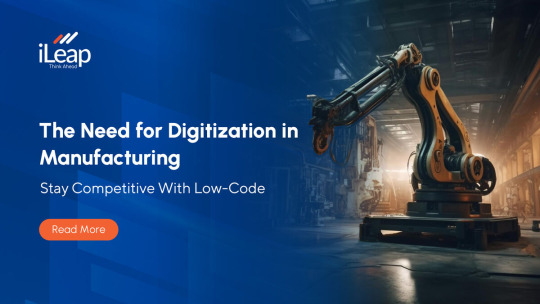
Industry 4.0 is transforming manufacturing with smart factories, automation, and digital integration. Technologies like the Internet of Things (IoT), artificial intelligence (AI), and low-code applications are enabling manufacturers to streamline processes and develop customized solutions quickly. Low-code platforms empower manufacturers to adapt to global demands, driving efficiency and innovation.
Previously, cross-border transactions in manufacturing faced delays due to bureaucracy, complex payment mechanisms, and inconsistent regulations. These challenges led to inefficiency and increased costs. However, Industry 4.0 technologies, such as digital payments, smart contracts, and logistics tracking, have simplified international transactions, improving procurement processes.
Low-code applications are key in this transformation, enabling rapid development of secure solutions for payments, customs clearance, and regulatory compliance. These platforms reduce complexity, enhance transparency, and ensure cost-effective, secure global supply chains. This shift aligns with the demands of a connected global economy, enhancing productivity and competitiveness.
The Need for Digitization in Manufacturing
Digitization has become crucial for manufacturing to stay competitive, with new technologies and the need for automation driving the sector’s transformation. Key features include ERP systems for centralized management of inventory, finances, and operations; digital supply chain tools for visibility and disruption prediction; real-time data for performance monitoring; sustainability tracking; and IoT/RFID for better tracking, accuracy, and reduced waste.
Low-code applications play a pivotal role in digitization by enabling rapid development of tailored solutions for inventory management, supply chain optimization, and performance analytics. These platforms streamline processes, reduce manual work, and enhance agility, helping manufacturers implement digital transformations quickly and cost-effectively.
Upgrading Manufacturing Capabilities in the Era of Industry 4.0 with Low-code Solutions
Low-code applications are becoming essential for digital transformation in manufacturing, addressing operational challenges while managing increased production demands and a shortage of skilled staff. These platforms enable manufacturers to quickly develop tailored applications without needing specialized coding expertise, fostering faster, more flexible operations. By streamlining processes and aligning with modern consumer demands, low-code technology helps bridge the skills gap, empowering manufacturers to stay competitive and seize new opportunities in a rapidly evolving market.
Low-code Technology Benefits for Modern Industries
As digital transformation becomes increasingly crucial for manufacturing, many enterprises in the sector face challenges with outdated processes, legacy system limitations, customization challenges, and inadequate resources. Low-code applications offer a compelling solution, enabling manufacturers to streamline operations by eliminating paper-based processes and automating workflows across functions such as Production, Sales, Logistics, Finance, Procurement, Quality Assurance, Human Resources, Supply Chain, and IT Operations. Additionally, low-code platforms enhance compliance and safety standards through built-in automated tools.
These platforms deliver impressive results, including over 70% improvement in productivity and close to 95% improvement in output quality in specific scenarios. This is particularly evident in automating complex processes like order fulfillment—from receiving customer orders to delivering finished products and managing invoicing with customers. Use cases also include automating inventory management, enhancing predictive maintenance with real-time data, and optimizing supply chain operations. Low-code solutions make it easier for manufacturers to implement changes quickly, boosting agility and reducing time-to-market while improving overall operational efficiency.
Conclusion
Low-code platforms are driving digital transformation in manufacturing, addressing sector-specific challenges in industries like automotive, aviation, and oil & gas. With Industry 4.0 and smart manufacturing, iLeap’s low-code platform helps integrate IoT, advanced analytics, and end-to-end automation, leading to optimized workflows and real-time decision-making. By adopting agile development, manufacturers can quickly adapt to new technologies and market demands, making iLeap the ideal partner for digital transformation. Unlock the potential of Industry 4.0 with iLeap and turn challenges into growth opportunities.
3 notes
·
View notes
Text
Explore the power of predictive maintenance with AI/ML for vacuum pumps, motors, and more. Enhance reliability and reduce downtime. Learn more!
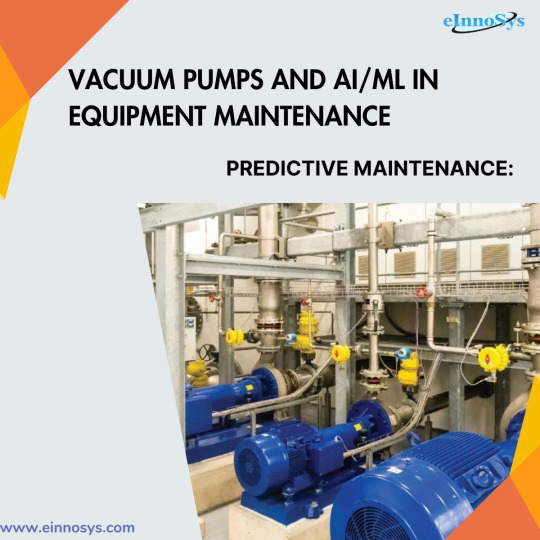
#Predictive Maintenance Vacuum Pumps#Vacuum Pump Reliability#Vacuum Pump Failure Prevention#Predictive Maintenance Motors#Predictive Maintenance Furnaces#Predictive Maintenance Rotary Devices#Predictive Maintenance AI/ML Bases#AI/ML for Equipment Maintenance#Machine Learning in Maintenance#Predictive Analytics for Maintenance#ML Algorithms for Maintenance
0 notes
Text
About Hydrowverse
HydrowVerse, founded by Thomas David Tency and Dr. Sachin Chaudhari at IIIT Hyderabad, is dedicated to revolutionizing water resource management with innovative, non-intrusive technology. Our research-based startup provides comprehensive water intelligence solutions, focusing on seamless and efficient monitoring of tanks, borewells, water meters, and rivers without direct contact. We empower individuals and organizations with insights to manage water sustainably, inviting you to join our journey towards smarter water management.
Mission
Optimize water infrastructure operations while transforming it into a smarter, more efficient system. Enhance water management education to foster knowledge and innovation.
Vision
Our vision is to establish ourselves as a prominent brand in the field of water intelligence, providing comprehensive and end-to-end solutions for all facets of water management. We are committed to integrating Internet of Things (IoT) and artificial intelligence (AI) technologies to develop innovative monitoring and management tools. Additionally, we will offer educational services that empower stakeholders at all levels to make informed decisions regarding water resources.
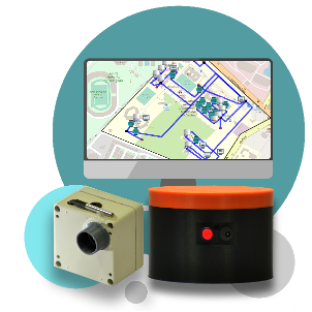
HydrowVerse innovates water management with Starr, an IoT-enabled device that accurately estimates water levels in overhead and underground tanks up to 5 meters deep. Starr ensures safety and reliability by avoiding sensor contact with water. Real-time updates help organizations track water levels, prevent overflows, and manage resources effectively. Built-in tank leakage detection enables proactive maintenance to minimize water loss. Starr enhances WaterAid’s water storage and distribution efforts, leading to smarter, data-driven management for a sustainable future. Together, we ensure every drop is measured and conserved.
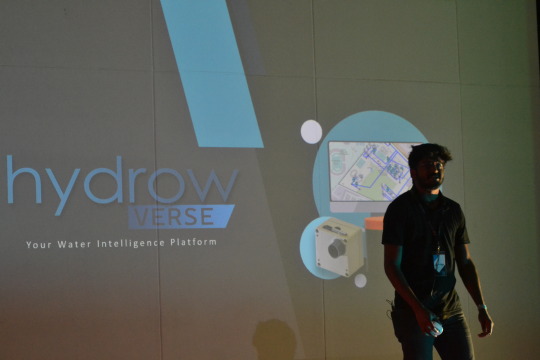
Our real-time dashboard is meticulously designed to provide a comprehensive overview of water resource management by integrating data from all connected devices into a user-friendly interface. This centralized platform presents key metrics and performance indicators, enabling users to monitor water usage, identify anomalies, and discern trends at a glance.
In addition to real-time data visualization, our dashboard incorporates predictive maintenance tools that analyze historical data to forecast potential issues before they escalate. This proactive approach facilitates timely interventions, minimizing downtime and associated maintenance costs.
Furthermore, the dashboard encompasses water pressure estimation capabilities, offering critical insights into system performance and ensuring optimal water distribution.
Collectively, these features empower users to make informed decisions, optimize operational efficiency, and safeguard the integrity of their water infrastructure.
Our solutions are easily adopted, seamlessly integrating with organizations of all sizes. They’re cost-effective, reducing water loss and operational costs. Real-time updates allow users to monitor water resources and address issues promptly. Our technology is scalable, growing with your needs and maintaining optimal efficiency as your infrastructure expands.
#smart meters#water tech#hydrowverse#Thomas David tency#Retrofit#Non intrusive tech#analog water meters#AI#ML#Water intelligence#leakage detection#Water Monitoring
2 notes
·
View notes